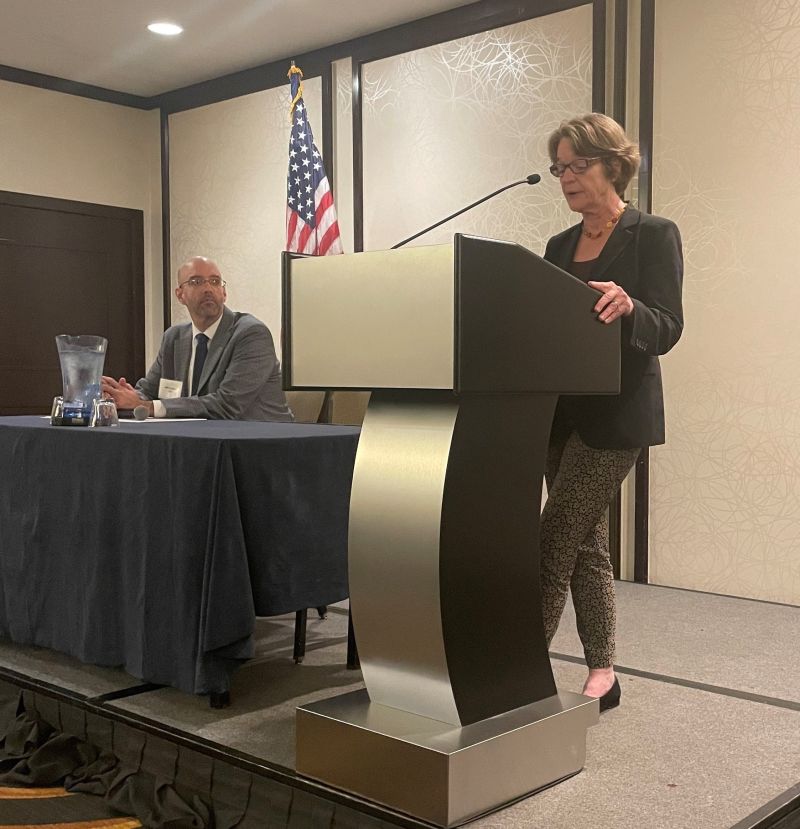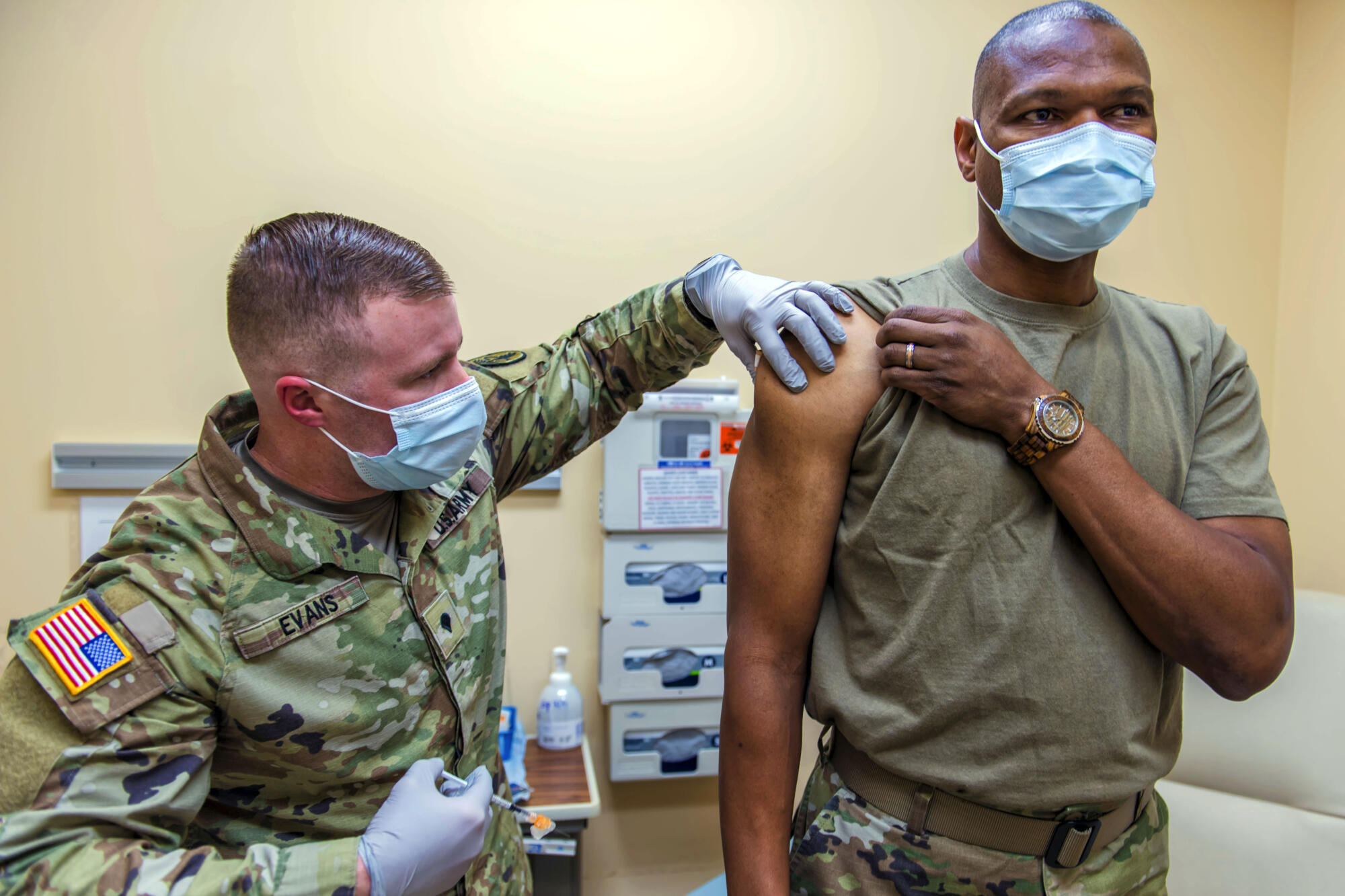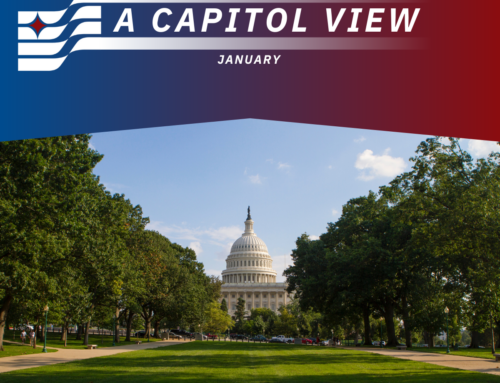What’s Going on in Congress? | Continuing Resolution and SBIR/STTR Reauthorization
The Race to Avert Government Shutdown
Today marks the end of the fiscal year, and Congress was able to pass a stopgap funding bill or ‘Continuing Resolution’ to prevent the government from shutting down. The short-term solution will fund the government through December 16.
The Senate developed its own funding bill using a legislative shell vehicle that included some emergency funding increases like $12.3 billion for Ukraine, $400 million for SSA, $20 million for the Mississippi water crisis, and $1 billion for the HHS Low Income Home Energy Assistance Program. However, Sen. Joe Manchin’s (WV) energy permitting reform was not included in the continuing resolution due to opposition from both sides of the aisle that threatened the two-thirds majority required to pass the bill. Sen. Manchin made a deal to support the recently passed Inflation Reduction Act of 2022 if energy permitting reform was included in the continuing resolution. The measure passed the chamber by a bipartisan margin of 72-25.
Consequentially, the House was slated to consider the stopgap resolution earlier today and it faced an easier path to signage as a simple majority is all that was required for its passage. It passed the chamber by a narrow margin of 230-201 sending the bill the to president’s desk
To see the bill text and section-by-section summary, click the links below.
SBIR/STTR Program Reauthorization and Reforms
 Last week, Sen. Rand Paul (KY) and proponents of reauthorization came to an agreement on a 43-page compromise detailing several reforms to the program. The agreement has been dubbed the SBIR/STTR Extension Act of 2022. Shortly after, the Senate passed the modified version via unanimous consent, a procedural process that allows for avoiding a legislative debate and voting processes if no member objects.
Last week, Sen. Rand Paul (KY) and proponents of reauthorization came to an agreement on a 43-page compromise detailing several reforms to the program. The agreement has been dubbed the SBIR/STTR Extension Act of 2022. Shortly after, the Senate passed the modified version via unanimous consent, a procedural process that allows for avoiding a legislative debate and voting processes if no member objects.
On September 29, the House via suspension of the rules was able to pass the measure by a margin of 411-9, sending it to the president’s desk for his signature. This method allows for bills to be considered without establishing the rules of passage, but requires a two-thirds vote in the chamber, which it overwhelmingly received. Below is an overview of some of the notable reforms.
- Further scrutiny on ties between awardees and China
- Applicants must disclose ties to any foreign countries ‘of concern’
- Additional performance benchmarks to attract private investment
- Phase I – $50,000 – $250,000
- Will double minimum performance standards for small businesses that receive more than 50 Phase I awards in 5 years
- Phase 2 – $750,000 – $2,000,000
- A small business that has received more than 50 Phase II awards within the past 12 years must garner, “an average of $250,000 of aggregate sales and investments.”
- For 100 Phase II awards, aggregate sales and investments must total $450,000 in the same period
- Phase I – $50,000 – $250,000
- Greater coordination with the SBA on security matters
For more information on the SBIR/STTR program changes, click here.
The Department of Energy’s Advanced Manufacturing Office Splits in Two
On September 14, The Department of Energy’s Advanced Manufacturing Office (AMO) held a briefing to detail how they will be reorganized into two separate offices, the Industrial Efficiency and Decarbonization Office (IEDO) and the Advanced Materials and Manufacturing Technology Office (AMMTO). IEDO will provide planning, management, and direction to promote Research Development and Demonstration (RD&D), workforce development, and offer technical assistance to decarbonizing the industrial sector. AMMTO will focus on Research Development and Demonstration (RD&D) to ensure next-generation manufacturing technologies, materials, and processes in order to create secure supply chains. At the moment IEDO and AMMTO have three open solicitations:
- AMMT: High-Performance Computing for Manufacturing, $39.3 million
- IED & AMMT: Small Business Innovation Research (SBIR), $66.3 million
- AMMT: Lab-Embedded Entrepreneurship Program, $38.2 million
Current and past IEDO and AMMTO solicitations, prizes, lab calls, and requests for proposals can be found here.
SMI’s Jeff Leahey Moderates National Energy Resources Organization Discussion

On September 20, SMI Vice President Jeff Leahey moderated a discussion with the Department of Energy’s Dr. Kathleen Hogan, Acting Under Secretary for Infrastructure, for Washington, DC energy professionals, and Capitol Hill staff. Dr. Hogan spoke to the National Energy Resources Organization (NERO) on a variety of energy issues including the Biden Administration’s plans to transition to a clean energy economy, implementation of the bipartisan infrastructure law and the Inflation Reduction Act, the Department’s reorganization and hiring needs, and more. Approximately 80 participants attended the event. NERO is a non-partisan organization whose mission is to engage in dialogue on energy issues, recognize outstanding achievements, and promote public awareness. Leahey serves on the Board of Directors as the group’s senior vice president.
Insight on the CHIPS Act from Aarzu
 On August 27, 2022, President Biden issued an executive order on the implementation of semiconductor funding provisions under the historic CHIPS and Science Act of 2022. The executive order establishes a CHIPS Implementation Steering Council and outlines six major priorities for the distribution of over $50 billion in federal semiconductor investments. The executive order also announced the creation of chips.gov, a new resource hub for all future CHIPS-related news and funding opportunities. Together with the White House, the Department of Commerce (DOC) has also taken steps to begin the implementation of historic CHIPS investments: on September 20, appointees for major CHIPS leadership positions within the DOC and White House were announced. The creation of key CHIPS leadership positions is a major step towards the successful implementation of over $50 billion in funding to expand our nation’s semiconductor manufacturing capabilities.
On August 27, 2022, President Biden issued an executive order on the implementation of semiconductor funding provisions under the historic CHIPS and Science Act of 2022. The executive order establishes a CHIPS Implementation Steering Council and outlines six major priorities for the distribution of over $50 billion in federal semiconductor investments. The executive order also announced the creation of chips.gov, a new resource hub for all future CHIPS-related news and funding opportunities. Together with the White House, the Department of Commerce (DOC) has also taken steps to begin the implementation of historic CHIPS investments: on September 20, appointees for major CHIPS leadership positions within the DOC and White House were announced. The creation of key CHIPS leadership positions is a major step towards the successful implementation of over $50 billion in funding to expand our nation’s semiconductor manufacturing capabilities.
Aarzu Maknojia, SMI Associate, delves into the details of CHIPS funding implementation and its implications for manufacturers, federal agencies, and other key stakeholders:
We’ve been talking about the CHIPS Act since it was first authorized in the FY21 NDAA – back in January 2021. It’s really exciting to see that Congress was able to work together to pass the CHIPS and Science Act, enabling the ideas we’ve been talking about for almost two years to finally come to fruition.
Microchips are in everything and any disruptions in the supply chain can result in massive delays for industries across the board. The United States’ dependence on foreign microchips was one of the reasons that Americans were facing months-long delays for cell phones and automobiles. While inconvenient, future disruptions could threaten our national security and endanger our armed forces. Additionally, they could impact strategic assets like radars, sensors, satellites, radios, and other communications systems, missiles, jamming and anti-jamming tools, and more.
As mentioned before, the CHIPS Act invests over $50 billion towards the expansion of our domestic semiconductor sector. The biggest portion of this is the Financial Assistance Program (also known as the Incentives Program) which accounts for $39 billion over five years to support the construction and expansion of facilities used to manufacture semiconductors (as well as materials and equipment). Funding is also available for the establishment of the National Semiconductor Technology Center, a National Advanced Packaging and Manufacturing Program, up to two new Manufacturing USA Institutes, as well as various research and development programs.
While the program office is not currently accepting applications, they have provided proposers with guidelines on what can be expected. Proposers might be surprised to see the scope of these requirements. SMI is currently working with clients to develop program ideas that align with each of the funding categories as well as to get a head start on gathering materials and forming teams. Small businesses, in particular, may find that they are unable to gather the materials quickly once the funding application is released (expected in February 2022). If you are interested in applying, we encourage you to review the guidelines and get started now.
For further questions or inquiries on CHIPS funding opportunities and programs, please reach out to Aarzu Maknojia at aarzu@strategicmi.com.
Executive Order on Biomanufacturing

On September 12, 2022, President Biden issued an Executive order on Advancing Biotechnology and Biomanufacturing Innovation for a Sustainable, Safe, and Secure American Bioeconomy. The goal of the executive order is to safeguard the “bioeconomy” of the United States, which is economic activity derived from biotechnology and biomanufacturing.
In order to secure the bioeconomy, the Biden administration aims to:
- Increase and coordinate Federal investment in key research and development areas of biotechnology and biomanufacturing
- Foster a biological data ecosystem to advance innovation
- Improve and expand domestic biomanufacturing production capacity and processes along with piloting and prototyping efforts
- Boost sustainable biomass production and create climate-smart incentives for American agricultural producers and forest landowners
- Expand market opportunities for bioenergy and biobased products and services
- Train and support a diverse, skilled workforce
- Clarify and streamline regulations
- Elevate biological risk management as a cornerstone of the life cycle of biotechnology and biomanufacturing
- Promote standards, establish metrics, and develop systems to grow and assess the state of the bioeconomy
- Secure and protect the United States bioeconomy
Engage in the international community to enhance biotechnology R&D cooperation





